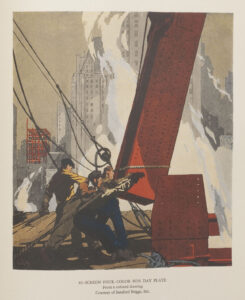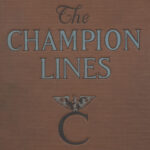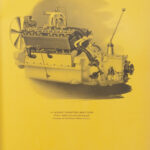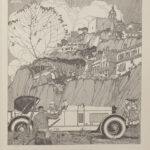This elaborately titled volume was published by the Champion Coated Paper Company to showcase and market its various paper lines. Today, the book serves as a valuable reference work covering the paper types and printing processes of the early 20th century.
Coated paper, as the name implies, is coated on one or both sides with a mixture of binder and pigment; the resulting paper provides an excellent base for printing. The coating, when burnished, creates an enamel-like surface, which explains several of the company’s fanciful product names for their enamel papers: Aigrette, Wedgewood, Velvett and Hingefold (which “folds both ways”). 
Inside the front cover of this hefty tome there’s an index which, we are told, “gives the whole story – study it carefully.” It lists in graph form all the company’s papers, along with examples of illustrations that have been produced using various printing techniques, which in themselves serve as a chronological guide to the history of illustration processes: woodcut, Ben Day, photogravure, halftone, and so on.
The Champion Coated Paper Company was founded in 1893 in Hamilton, Ohio by Peter Thomson, a printer of greeting cards and valentines. In the early decades of the 20th century, Champion was known for offering the lowest industry prices for coated papers.
 In 1926, Champion would inaugurate a technical research division – at the time a fairly new concept in the paper industry. The company hired a chemist from DuPont to help solve a problem they were having with the alum that was used in paper coatings. The chemist devised a solution during his first week, and lo: within a few years, there were 40 chemists on Champion’s staff. The subsequent technological advances led to better-quality paper, as well as profitable new byproducts, including tanning extract and turpentine.
In 1926, Champion would inaugurate a technical research division – at the time a fairly new concept in the paper industry. The company hired a chemist from DuPont to help solve a problem they were having with the alum that was used in paper coatings. The chemist devised a solution during his first week, and lo: within a few years, there were 40 chemists on Champion’s staff. The subsequent technological advances led to better-quality paper, as well as profitable new byproducts, including tanning extract and turpentine.
Champion experienced steady growth through mergers, acquisitions and the purchase of timberlands throughout the 20th century, until it was finally acquired by International Paper in June 2000.





